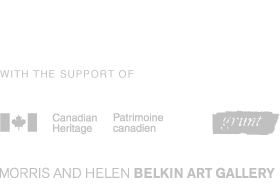Aboriginal Art in the Sixties: Fine and Popular
-
51
details
-
75
details
-
107
details
-
106
details
-
105
details
-
104
details
-
98
details
-
97
details
-
96
details
-
74
details
-
163
details
-
71
details
-
69
details
-
65
details
-
820
details
-
816
details
-
814
details
-
813
details
-
108
details
-
240
details
-
809
details
-
54
details
-
59
details
-
10
details
-
180
details
-
168
details
-
167
details
-
824
details
-
823
details
-
817
details
-
181
details
-
815
details
-
241
details
-
811
details
-
787
details
-
786
details
-
784
details
-
242
details
-
810
details
-
244
details
-
52
details
-
158
details
-
171
details
-
166
details
-
165
details
-
162
details
-
161
details
-
160
details
-
159
details
-
157
details
-
176
details
-
156
details
-
103
details
-
102
details
-
101
details
-
93
details
-
60
details
-
55
details
-
174
details
-
177
details
-
172
details
-
243
details
-
170
details
-
169
details
-
164
details
-
73
details
-
828
details
-
819
details
-
818
details
-
234
details
-
178
details
-
233
details
-
232
details
-
231
details
-
230
details
-
183
details
-
182
details
-
821
details
-
179
details
-
89
details
Totem Land
In the 1920s, when the “disappearance” of totem poles became a public concern, a Totem Pole Restoration project was financed by the Department of Indian Affairs (DIA). A committee was struck with the DIA Superintendent as Chair, and Marius Barbeau, chief ethnologist of the National Museum as one of the committee members. They focused on the poles near the Upper Skeena River, the lands through which the railway ran. Subsequently, the first of seven poles were cut down and put in cement blocks along the railway to promote tourism. During Barbeau’s work on the Skeena, he invited various artists to paint a “dying” way of life. An exhibition in Ottawa of their paintings, Canadian West Coast Art: Native and Modern, was curated by Barbeau and Eric Brown, director of the National Gallery, in 1927.
The Queens totem pole loaded on to the “;Pacific Unity” at Victoria on its voyage to England, 1958
Three decades later, the 1950s tourism venture, “Totem Land,” (an organization to protect Indian Art and promote goodwill) and the 1966 “Route of the Totem,” poles erected along highways and at ferry terminals, and on-going totem pole restoration programs at the Royal British Columbia Museum and UBC Museum of Anthropology provided a renewed interest in poles. Despite the huge historical gap between these projects, the initiatives reveal a relationship between totem poles, tourism, Canadian nationalism and art. Against this more recent historical backdrop, Ellen Neel was named as ‘renowned for her totem poles’ in a display hosted by the Coqualeetza Fellowship Club at the Vancouver Art Gallery in 1954. By 1955 Neel was known as the “the most famous totem carver on the west coast” according to a tribute to her after her untimely death in 1966. Taught from childhood to carve totem poles as a skill that would allow her to make a living and maintain cultural knowledge, she was propelled into a capitalist market that eventually took her to Vancouver, where she mentored her own family as she had been. Neel became known as a leader who advocated for women, and who “worked shoulder to shoulder with men,” not only as a carver, but as a business woman who embarked on many political and cultural ventures in Vancouver with civic, provincial, institutional and aboriginal leaders. However, her bold embrace of what was ‘modern’ in terms of business, politics and art in the 1940s and 1950s would lead to her exclusion from the 1960s discourse of tradition, aesthetics and connoisseurship in Northwest coast art.
